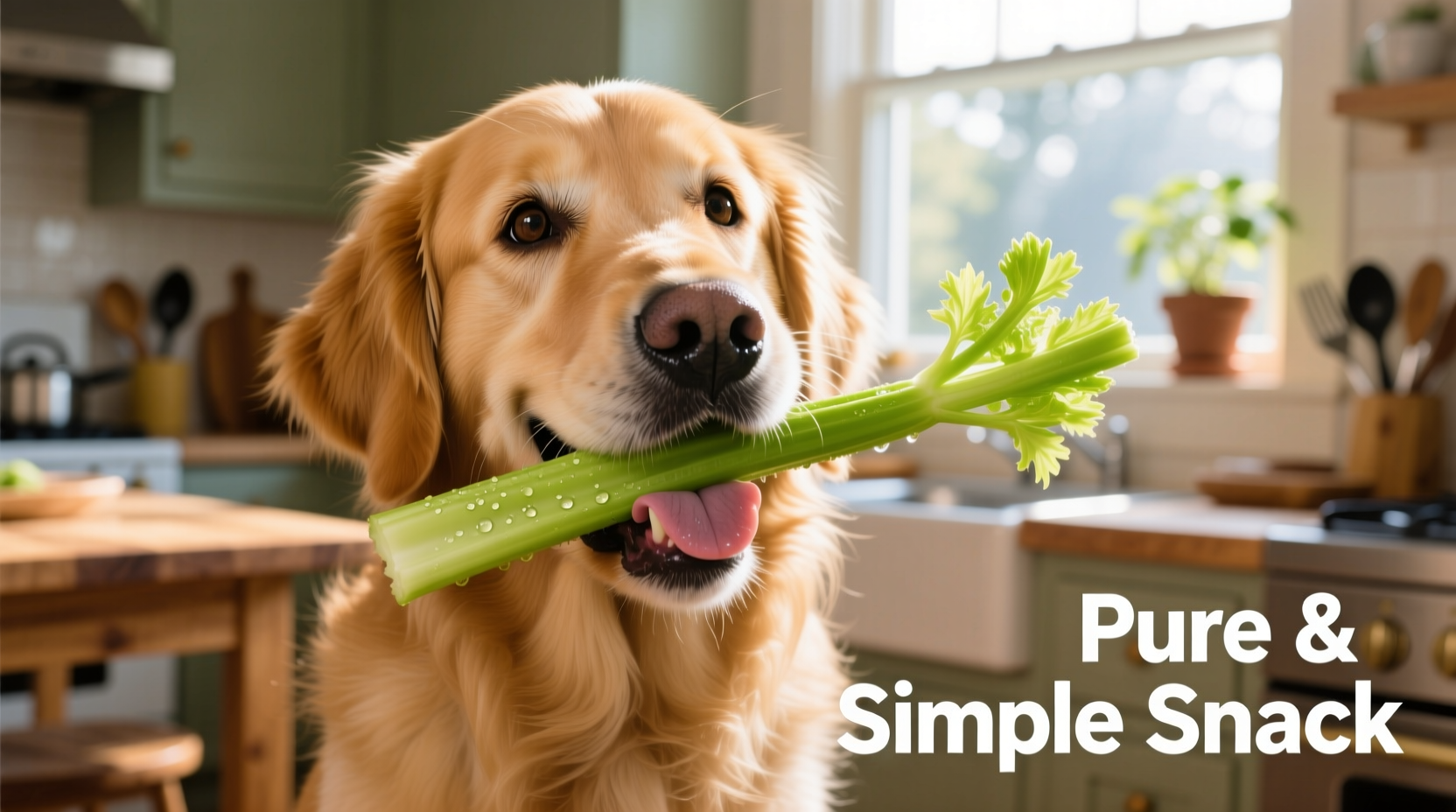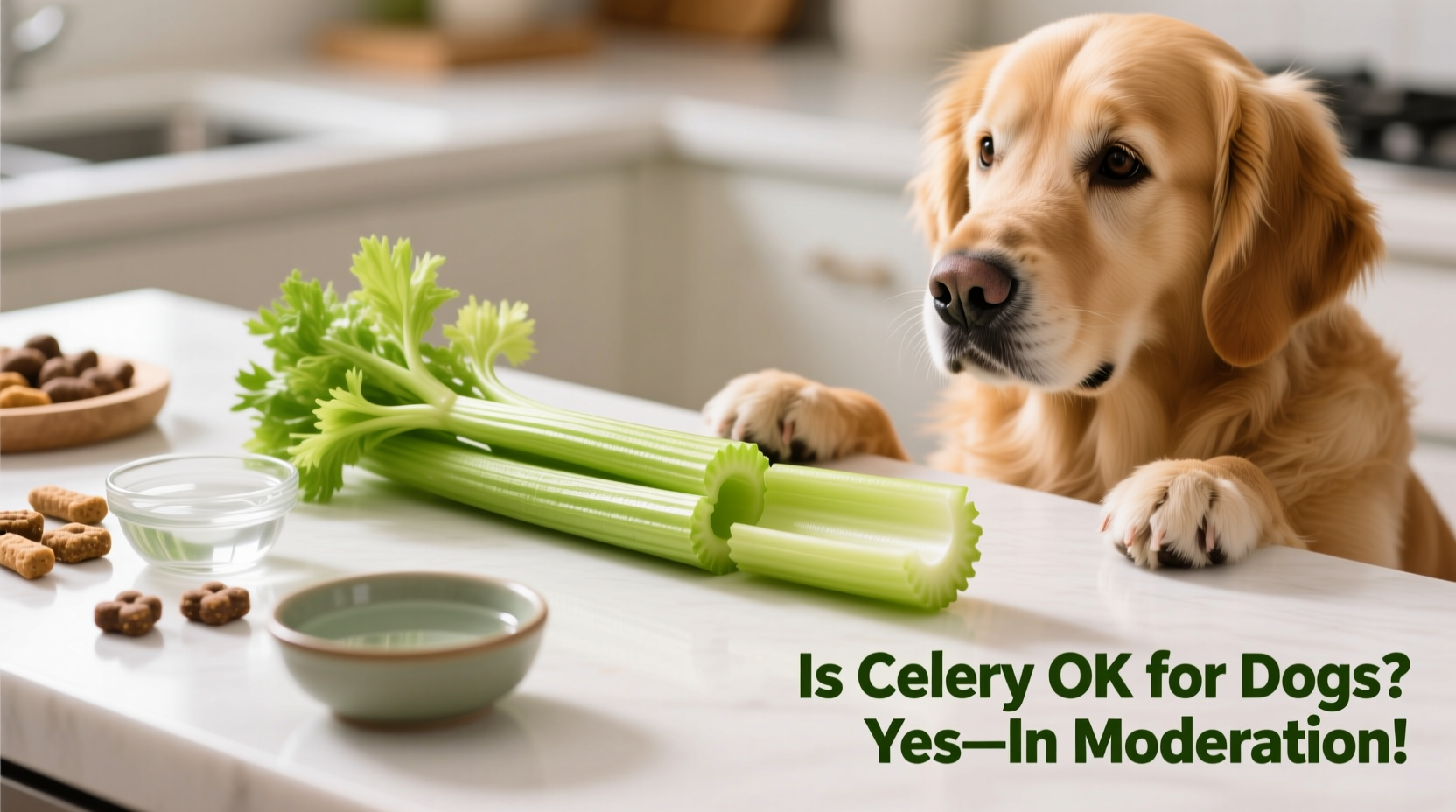As a dog owner exploring healthy treat options, you've probably wondered whether human foods like celery are safe for your furry companion. The good news is that celery ranks among the healthiest vegetable snacks you can share with your dog—when served correctly. Unlike toxic foods such as chocolate or grapes, celery offers nutritional benefits while posing minimal risks if you follow proper feeding guidelines.
Why Celery Benefits Your Dog's Health
Celery's nutritional profile makes it an excellent low-calorie treat option, particularly for dogs needing weight management support. According to the Veterinary Information Network, this crunchy vegetable contains:
- Vitamin K for healthy blood clotting
- Potassium supporting muscle and nerve function
- Fiber aiding digestion (in appropriate amounts)
- Nearly 95% water content for hydration
Unlike processed dog treats that may contain artificial additives, plain celery provides natural nutrition without empty calories. The American Society for the Prevention of Cruelty to Animals confirms celery's safety as an occasional treat when prepared properly.

Understanding Celery's Potential Risks for Dogs
While celery is non-toxic, certain preparation methods and serving sizes can create health concerns. The primary risks include:
| Risk Factor | Safe Approach | When to Avoid |
|---|---|---|
| Choking hazard from raw sticks | Cut into 1-inch pieces | Dogs with dental issues |
| Digestive upset from excess fiber | Limited to 1-2 small pieces daily | Dogs with sensitive stomachs |
| Pesticide residue | Thoroughly wash or choose organic | Non-organic celery not properly cleaned |
The American Veterinary Medical Association notes that while celery itself isn't dangerous, improper preparation turns this healthy snack into a potential hazard. Large chunks can cause choking, especially in small breeds, while excessive amounts may lead to gas or diarrhea due to the high fiber content.
Safe Preparation Methods for Dog-Friendly Celery
Follow these veterinarian-recommended steps to serve celery safely:
- Wash thoroughly to remove pesticides and bacteria
- Remove leaves (they contain higher concentrations of psoralens)
- Cut into small pieces (1-inch lengths for medium dogs, smaller for toy breeds)
- Start with tiny portions to monitor your dog's reaction
- Never add seasonings like salt, garlic, or onion powder
For dogs new to celery, the Ohio State University College of Veterinary Medicine recommends beginning with just one small piece to ensure no adverse reactions occur before making it a regular treat.
Appropriate Portion Sizes by Dog Weight
Overfeeding celery can cause digestive issues despite its safety. Follow these portion guidelines:
- Toy breeds (under 10 lbs): ½ inch piece, 2-3 times weekly
- Small dogs (10-25 lbs): 1 inch piece, 2-3 times weekly
- Medium dogs (25-50 lbs): 2 inch pieces, 3-4 times weekly
- Large dogs (50+ lbs): 3-4 inch pieces, 3-4 times weekly
Remember that treats—including healthy options like celery—should comprise no more than 10% of your dog's daily caloric intake. The American College of Veterinary Nutrition emphasizes that balanced commercial dog food should remain the foundation of your pet's diet.
When Celery Might Not Be Right for Your Dog
Certain health conditions require avoiding celery or consulting your veterinarian first:
- Dogs with kidney disease (due to potassium content)
- Puppies under 6 months (choking risk)
- Dogs with history of pancreatitis
- Dogs with known vegetable sensitivities
If your dog experiences vomiting, diarrhea, or lethargy within 12 hours of eating celery, contact your veterinarian. While rare, some dogs may have individual sensitivities to compounds in celery called psoralens.
Healthy Vegetable Alternatives to Celery
If your dog doesn't enjoy celery or you want variety, these veterinarian-approved vegetables make excellent alternatives:
- Cucumber slices (excellent hydration)
- Carrot sticks (frozen for teething puppies)
- Green beans (steamed for easier digestion)
- Zucchini slices (low calorie option)
Always introduce new foods gradually and monitor for adverse reactions. The ASPCA's pet care guidelines recommend consulting your veterinarian before making significant changes to your dog's diet.
Practical Tips for Incorporating Celery into Your Dog's Diet
Make celery more appealing while maintaining safety:
- Mix small pieces with regular food for picky eaters
- Stuff hollowed celery sticks with dog-safe peanut butter
- Freeze celery in water for a cooling summer treat
- Blend small amounts into homemade dog food recipes
- Use as training rewards due to low calorie count
Remember that fresh, raw celery provides the most nutritional value, but steamed celery may be easier for senior dogs or those with dental issues to consume. Always supervise your dog when introducing new foods.











 浙公网安备
33010002000092号
浙公网安备
33010002000092号 浙B2-20120091-4
浙B2-20120091-4